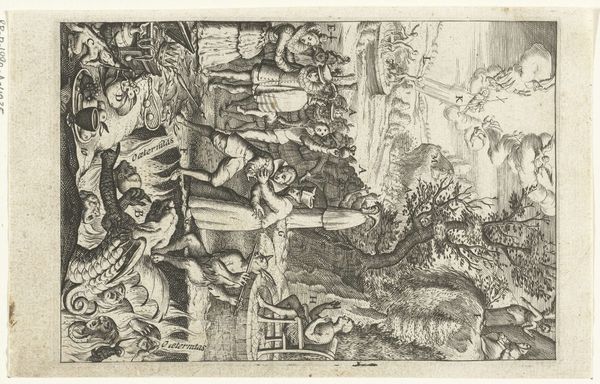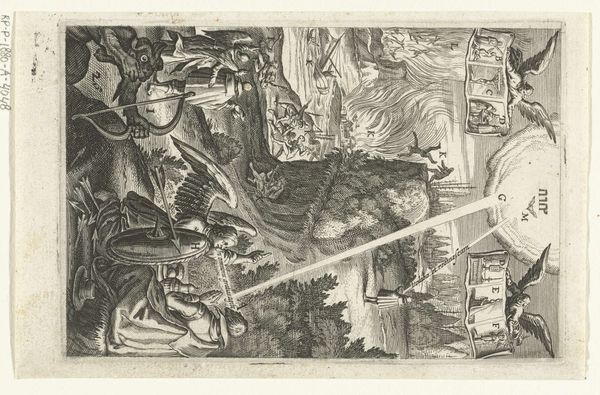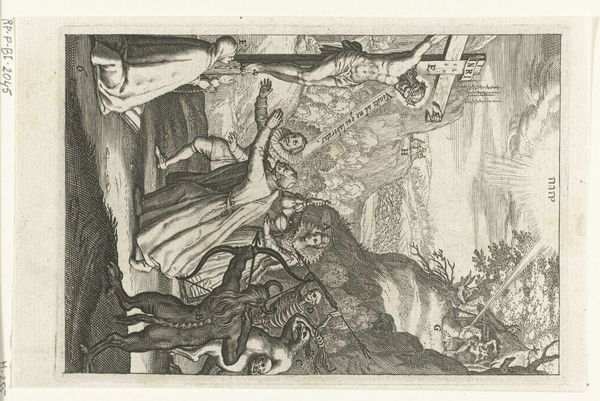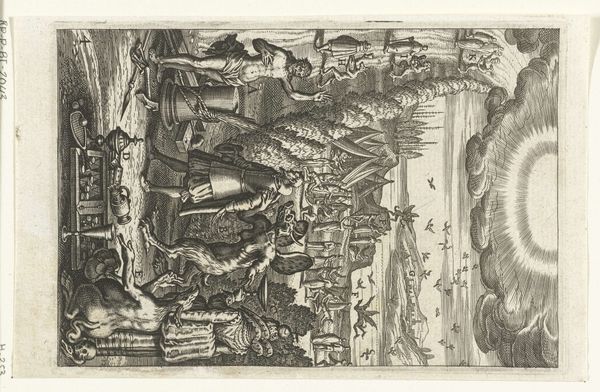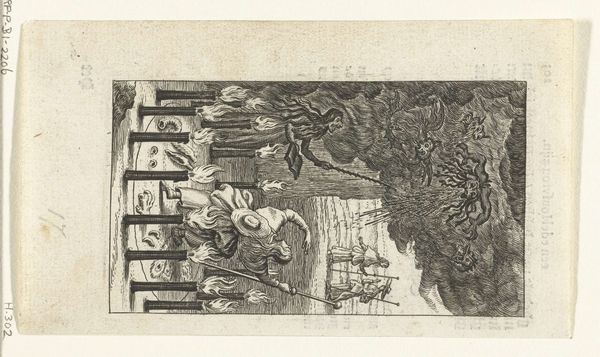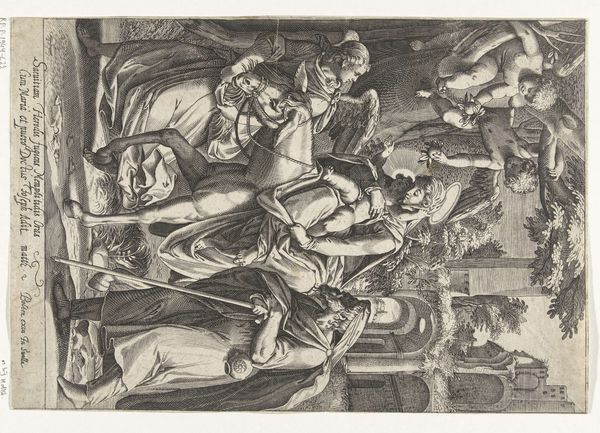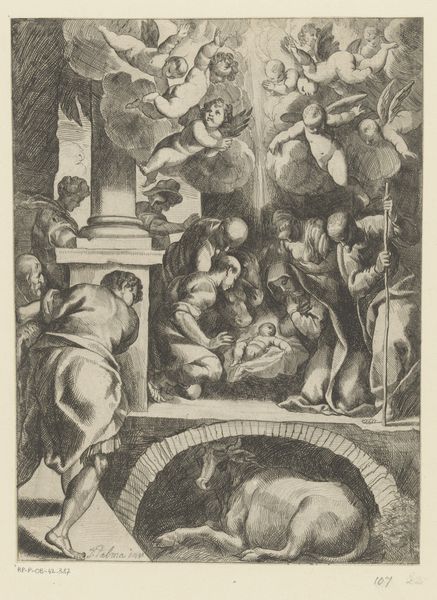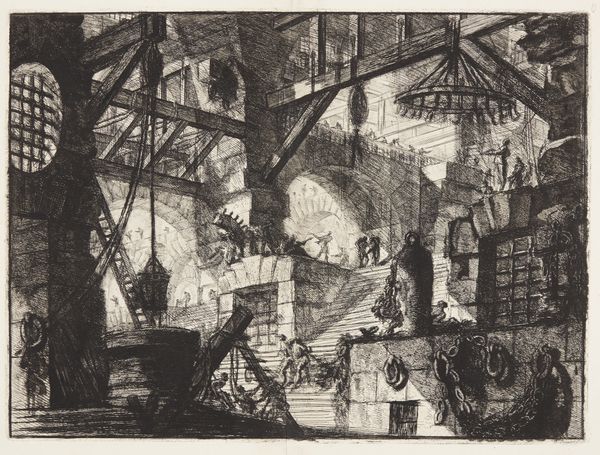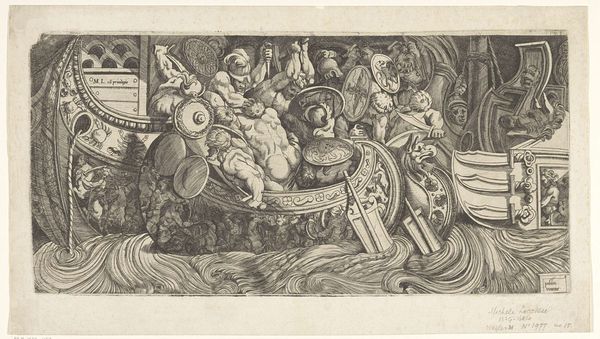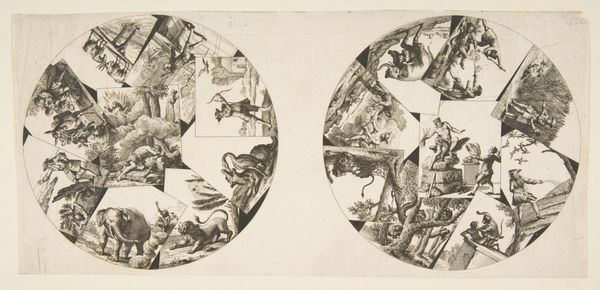
Embleem met Vadert Tijd als symbool voor het voorbijgaan van de tijd 1620 - 1623
0:00
0:00
anonymous
Rijksmuseum
engraving
#
allegory
#
baroque
#
line
#
history-painting
#
engraving
Dimensions: height 134 mm, width 93 mm
Copyright: Rijks Museum: Open Domain
Curator: This engraving, "Embleem met Vadert Tijd als symbool voor het voorbijgaan van de tijd," dating from 1620-1623, is part of the Rijksmuseum collection. It's unsigned, created by an anonymous engraver. Editor: It's immediately striking—a somewhat morbid and intricately rendered landscape in monochrome. I’m getting a sense of foreboding and transience just from the heavy use of line. Curator: The use of line is exceptional. Notice how it constructs depth and volume, shaping figures and allegorical elements to convey a meditation on time. There is Father Time with his scythe and other symbolic imagery that evokes Vanitas. Editor: Indeed. Looking closer, you can sense the laborious process of engraving. What tools were used to carve the image onto the metal plate? Who might have commissioned this? Was it meant for a book, or circulated independently? It would be interesting to explore these material contexts to determine the meaning. Curator: Those are critical considerations. Examining the formal composition, the juxtaposition of youthful figures with images of death heightens the artwork’s philosophical weight. It speaks to broader Baroque themes, contrasting earthly pleasures and spiritual aspirations. It prompts us to reflect on mortality and the swift passage of time. Editor: It makes me think about labor—not just in its creation but in the way the symbols function as a kind of societal accounting system, tracking a life from birth to death through material goods and status markers. Was this engraving part of a larger project of knowledge production and control? Curator: Ultimately, the anonymous origins add a layer of mystery. Despite our inquiries into medium, methods, and meanings, this intricate work remains, at its core, a poignant meditation on human existence. Editor: Yes, and maybe a starting point to questioning art history's biases about authorship and celebrating craftsmanship that exists in social contexts, too. It’s a humbling artifact.
Comments
No comments
Be the first to comment and join the conversation on the ultimate creative platform.
